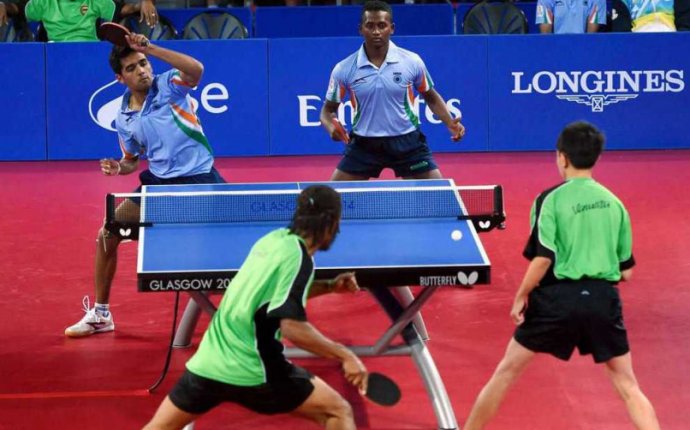
Table tennis rules in hindi
The motion of the serve is much less important than the quality of your contact with the ball. For most serves, this relies on a very well-timed flick of the wrist. Most world-class players use very simple motions but can be extremely deceptive based on when and where they contact the ball. The only way to learn this is through lots of practice. Figure out how to generate the pure basic spins and then all the combinations. For instance, underspin can be generated by forward-friction below the ball, or downward-friction from the back of the ball. In general, the lower you let the ball drop after the toss, the lower trajectory of the serve. The closer the first bounce is to the net, the closer the second bounce will land. That is because much of the impact is exhausted in horizontal motion, leading to a softer bounce. These are basic laws of physics and you need to master the right chemistry of friction (spin) + velocity (to send the ball forward) in order to produce a controlled serve of any combination as strategically necessary against your opponent.
The best way to practice is with a huge bucket of balls and serving into a ball-catching net like the RoboPong, that way you can hear how spinny your serve is once it falls into the pile of other balls. It is also important to remove all fear of messing up because the best serves often require the slightest contact and it is not uncommon to completely whiff it. Table tennis training is a great way to make a billion mistakes in a short time, so take advantage of it with a large (supply of) balls.
Unless you are playing someone 2 or 3 levels below you, the objective of the serve is not to win outright but to setup your following shot. Therefore, returning the serve of an equal opponent is rarely difficult, but how you return it can lead to vulnerabilities. Though less noticeable after the rule change from 5 serves each to 2 serves each, the sequence and pattern of serving is also important. Therefore, a good serve is a smart serve that not only predicts your next shot, but strategically positions you to maximize your own strengths against your opponent's weaknesses throughout the match.
As with most skills, the hardest part is actually doing it. There are few excuses for a weak serve since you do not have to rely on anyone but yourself to practice it. Every weak serve is an unforced error in the only area where you are granted complete control both during the point and in training.
The payoff is huge. Serve return is the hardest part of the game for most players because your opponent is given a meditated space to deceive and dictate you. A good serve can make players with fancy shots look very stupid and useless if they can't even get into the point; it distinguishes you from a recreational player. Starting off with a good serve is like winning the ovarian lottery, except you get to pick the numbers ahead of time if you're willing to put in the effort.
For inspiration, the reverse-pendulum motion starts with the wrist winded back, so that you spin the ball with an outward flick. This is rather tricky at first but with practice will allow more variations. Timo Boll primarily serves this way.









